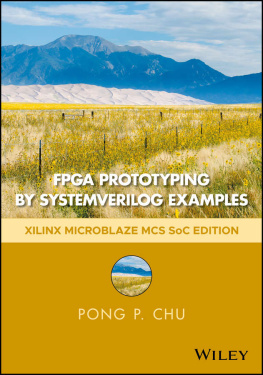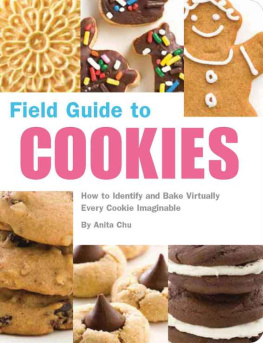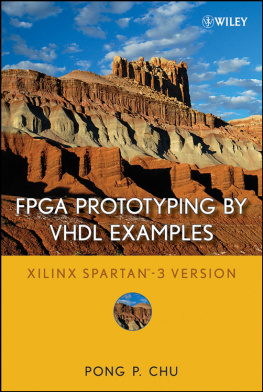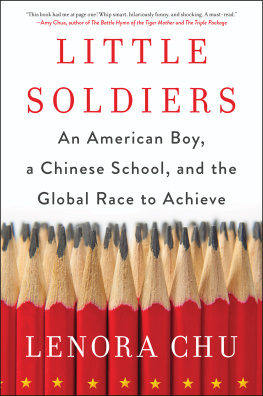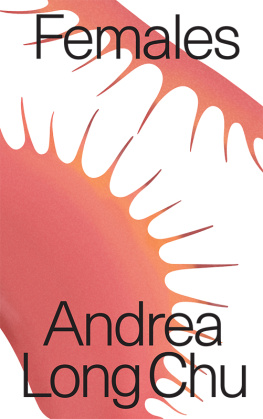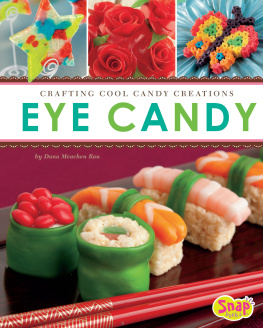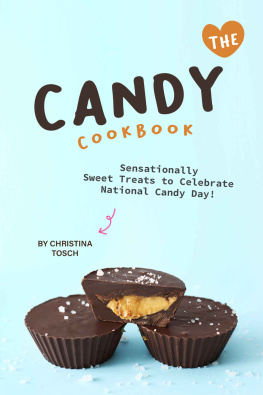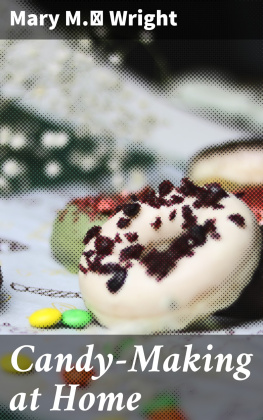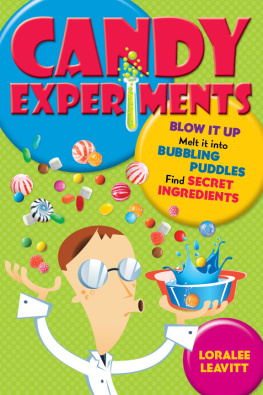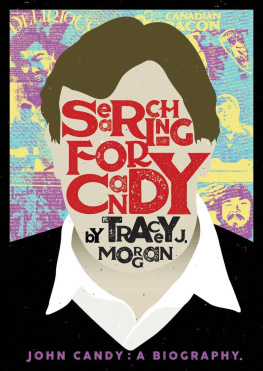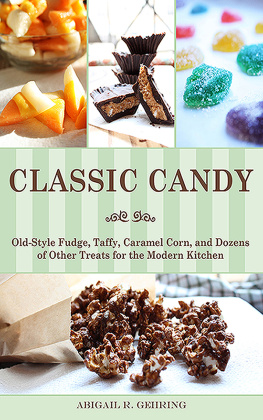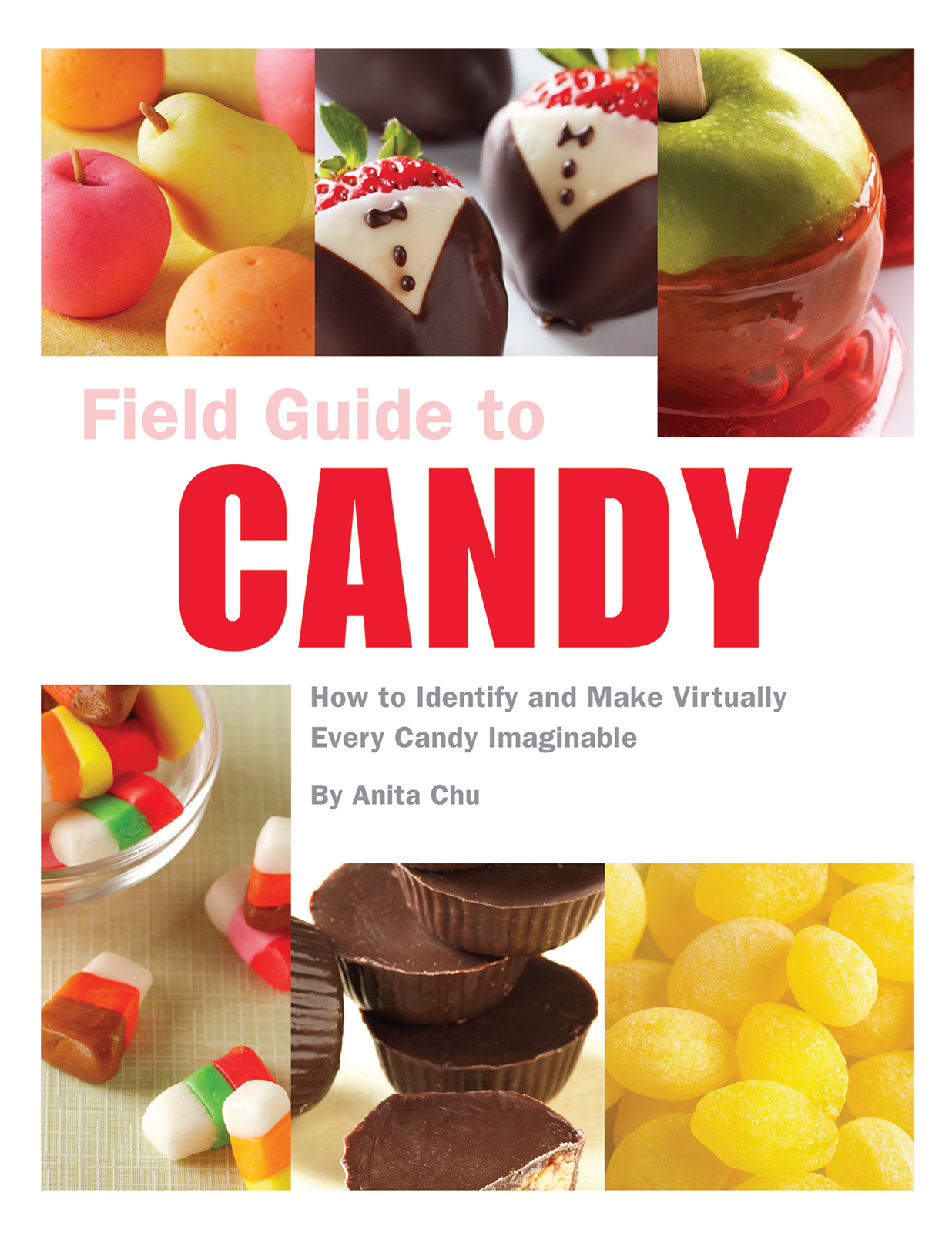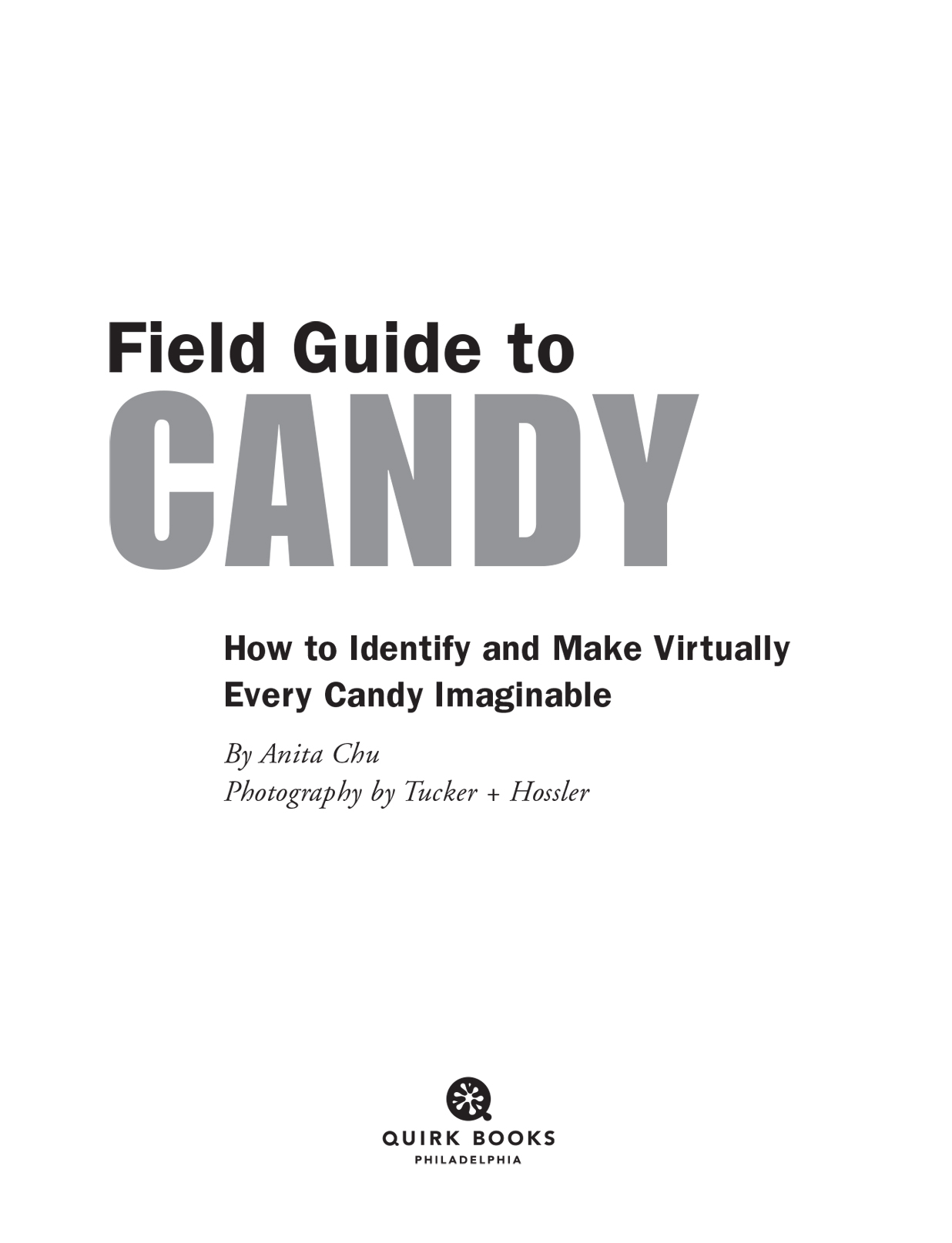Copyright 2009 by Quirk Productions, Inc.
All rights reserved. No part of this book may be reproduced in any form without written permission from the publisher.
Library of Congress Cataloging in Publication Number: 2009924377
eBook ISBN: 978-1-59474-810-3
Trade Paperback ISBN: 978-1-59474-419-8
Trade Paperback Designed by Jenny Kraemer
Photography by Tucker + Hossler
Trade Paperback Production management by John J. McGurk
Quirk Books
215 Church Street
Philadelphia, PA 19106
www.quirkbooks.com
v3.1
INTRODUCTION
Say the word candy and visions of brilliantly-colored gumdrops, soft chewy caramels, foil-wrapped chocolate bars, and rainbow-striped peppermint sticks come to mind. It is a part of many holiday celebrations, a treat for children, or a quick sugar fix. Indulging in a favorite candy bar or piece of fudge is one of lifes finest pleasures.
The first candy was made when the ancient Egyptians coated fruits in honey to preserve them. Arabs turned the cultivation and refining of sugarcane grass into a booming industry in the 8th century, popularizing sweets in the Middle East and southern Europe. The word candy comes from the Arabic word qandi meaning sugar.
In North America candy usually refers to highly sweet, vividly colored tidbits such as gummy bears, candy corn, and marshmallows. In the United Kingdom candies are called sweets ; the British are famous for their many boiled sweets and chewy toffees. In France and other parts of western and southern Europe, the word bonbon refers to candies from chocolate truffles to candied fruit to marzipan. The term confectionery refers to sweet, sugary candies and pastries. But candy rarely contains flour or is baked in the oven like pastries and cakes. You shouldnt need utensils to eat candyjust pop it in your mouth.
There are several categories: chocolates , such as truffles, bars, and barks; fruits and jellies , such as candy apples and pte de fruit; sugary sweet candies, such as lollipops and peppermints; creamy, sticky, chewy candies, such as fudge, divinity, fondant, and nougat; and nutty candies, such as peanut brittle, turtles, and marzipan. Additionally, popular fun and simple classics from chocolate-dipped pretzels to kettle cornare ideal for making with children or whipping up a quick treat.
This book will help you identify many of the most popular homemade candies around the world, discover what makes each one special, and re-create them in your home kitchen. You will also learn about some of the basic tools and techniques to make professional-looking candies, as well as simple ways to vary candy recipes to increase your candy repertoire. With this guide, homemade candies are just minutes away.
NOTES ON CANDY-MAKING TOOLS
Having the right tools to make candy will not only result in tastier candies but will also make the process more fun and enjoyable.
Baking pans. Although candy does not usually require baking, sturdy pans are essential: They hold liquid candy mixtures such as caramels or truffle ganache while they set. Baking pans should be at least 2 inches deep and made of glass, pyrex, or metalpreferably aluminum.
Baking sheets , also known as cookie sheets , are ideal surfaces for lining up individual candies to cool or set up. Choose heavy, solid sheets; thick sheets of shiny aluminum are best. Jelly roll pans, also known as sheet pans , are rimmed on all four sides. Rimmed pans are very useful for candies that require you to pour a large amount of hot sugar or chocolate, such as taffy, brittle, or barks.
Candy and chocolate molds. Truffles, chocolate bunnies, lollipops, and other molded candies are formed with candy molds made of plastic, rubber, or stainless steel. Although most hard candy molds can be used for chocolate candies, the reverse is not true. Not all molds are made to withstand the extremely hot sugar syrups used for hard candies, which require a maximum temperature of 375F.
Candy thermometer. Youll need a thermometer that goes from 80F to 400F and has temperatures marked in increments of 5 for accuracy. Many thermometers have convenient markings for the different stages of cooking sugar.
Chocolate dipping tools. These small, flat, long-pronged forks or spirals are used to quickly dip candy centers into tempered chocolate without losing them. A regular fork or toothpick can be used instead.
Cooking spray greases baking sheets and baking pans for easy removal of candies. Use a flavorless vegetable oilbased spray to avoid adding unwanted flavors.
Food processor. This is helpful when grinding nuts and combining ingredients.
Gloves. Thin latex gloves protect your hands when manipulating hot sugar for taffy or brittle. Use non-powdered gloves to prevent contaminating the candy. Thin cotton gloves prevent fingerprints and other smudges on the shiny finish of molded chocolates.
Knives. A small paring knife is best when working with fruit and other delicate ingredients. A 6- to 8-inch chefs knife helps when chopping nuts and chocolate, or cutting candies.
Marble slab. This provides a perfectly smooth surface for working with candy; it also cools hot sugar mixtures quickly. If you dont have one, use a baking sheet.
Measuring cups. A graduated set of durable stainless steel dry measuring cups is best. Use a liquid measuring cup made of heavy glass.
Measuring spoons. Stainless steel measuring spoons are long-lasting and precise. Narrow, long spoons fit easily into small spice jars.
Mixers. Most of the recipes in this book can be made with a hand mixer or a stand mixer, and some recipes can be made by hand.
Parchment paper. Parchment paper is an excellent alternative to greased baking sheets. It is coated with silicone so candies come right off the nonstick surface without the mess of cooking spray or butter. Parchment paper is sold in rolls and precut sheets.
Ruler. A 18-inch metal ruler comes in handy for measuring candies and cutting them evenly.
Spatulas. Rubber spatulas are good for mixing ingredients and scraping candy batter out of bowls. Wide metal spatulas are indispensible for removing candies from sheets. An offset spatula has a long, thin metal blade bent slightly below the angle; use it to smoothly spread liquid candies such as brittles and barks and level dry ingredients when measuring.
Silicone baking mats. Baking mats made of silicone are the ultimate in convenience; candies come right off, theres no need for butter or cooking spray, and the mats are reuseable. Clean them with soap and water.
Wax paper. Place wax paper between layers of candies in storage to prevent them from sticking. Use it to line baking sheets, but do not put it in the oven or under candies made of hot sugar syrups; high heat can melt the wax coating.
Wooden spoon. The humble wooden spoon is an indispensible part of the pastry kitchen. A long-handled wooden spoon can be used to combine candy ingredients by hand or stir melting chocolate on the stove.
NOTES ON CANDY-MAKING INGREDIENTS
Most of the candies in this book can be made without any special or expensive ingredients. It helps to have a little knowledge about the most common candy ingredients to ensure the best results.
Baking soda. Baking soda, or sodium bicarbonate , reacts with acidic ingredients (such as corn vinegar, lemon juice, or cream of tartar) to form carbon dioxide. When it is added to hard candies like brittles or toffees, the resulting bubbles of carbon dioxide create a light, crunchy texture.


